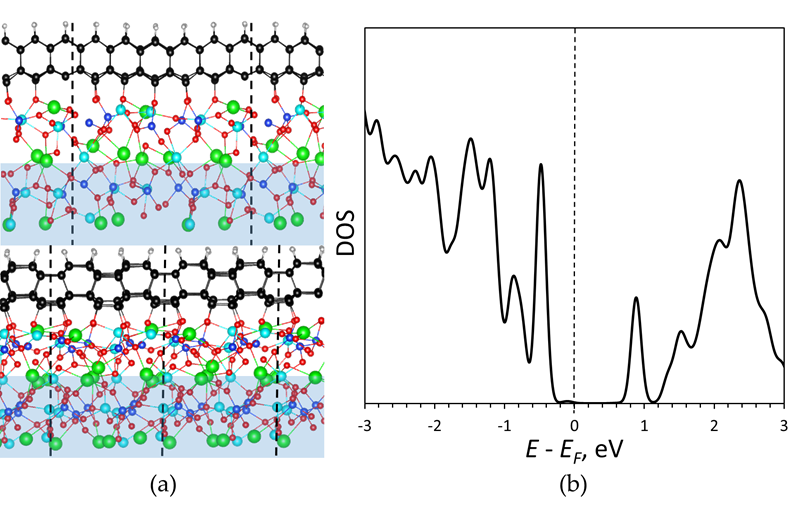The paper was published in Advanced Optical Materials.
Van der Waals (vdWs) heterostructures based on low dimensional semiconducting materials offer tremendous opportunities in investigating next generation electronic and optoelectronic devices. Careful design based on combinations of different crystal structures and their band alignment engineering in such architectures are crucial for realizing specialized functionality and preferable performance. Here, a polarized light sensitive photodetector with high efficiency and ultrafast response speed based on hybrid dimensional MoS2/Ta2Pd3Se8 vdWs heterostructure, which is owing to the unilateral depletion region as formed between the n–n junction, is reported. Our theoretical studies confirm this results. According to the theoretical analysis, a type-I band alignment will be formed between MoS2 and TPS when bringing them in physical contact, as displayed in Figure (a). At their interface, there possess a small energy offset of 0.28 eV between their conduction band and a large energy offset of 1.0 eV between their valence band. Then, we analyzed their energy band alignments under different bias conditions, as shown in Figure (b–d). At equilibrium state with Vds = 0 V, the electrons in MoS2 will transfer into TPS, forming a depletion region on the MoS2 side and accumulation region on the TPS side. In other words, a heterojunction with a unilateral depletion region is formed in MoS2 (Figure (b)). At a positive bias Vds > 0 V, both the heterojunction barrier and Schottky barrier become larger, and the electrons injected from the TPS side are hindered by the barriers, while a few holes are injected from the MoS2 side to flow, resulting in a small current amplitude (Figure (c)). When a negative bias Vds < 0 V is applied, both the heterojunction barrier and Schottky barrier decrease. Thus, the electrons are easily injected into MoS2 and pass through the heterojunction barrier and then flow to TPS, resulting in a large electron-dominated current as shown in Figure (d).

Band alignments of the MoS2/TPS heterostructure. a) Simulated band alignment between MoS2 and TPS. Energy band alignments and allowed charge flows of the MoS2/TPS vdWs diode at different bias, including b) Vds = 0 V, c) Vds > 0V, and d)Vds < 0 V. Note: the grey filled area indicates the unilateral depletion region in MoS2. The dashed lines denote estimated relative positions of the Fermi levels in MoS2 and TPS.
We believe that this work sheds light on the potential applications of hybrid dimensional vdWs heterostructures, which may provide new insight for exploring high performance photodetectors with advanced functions.







